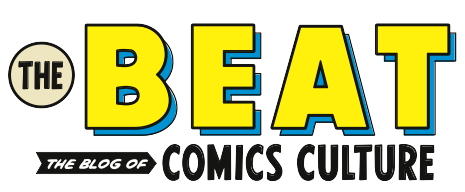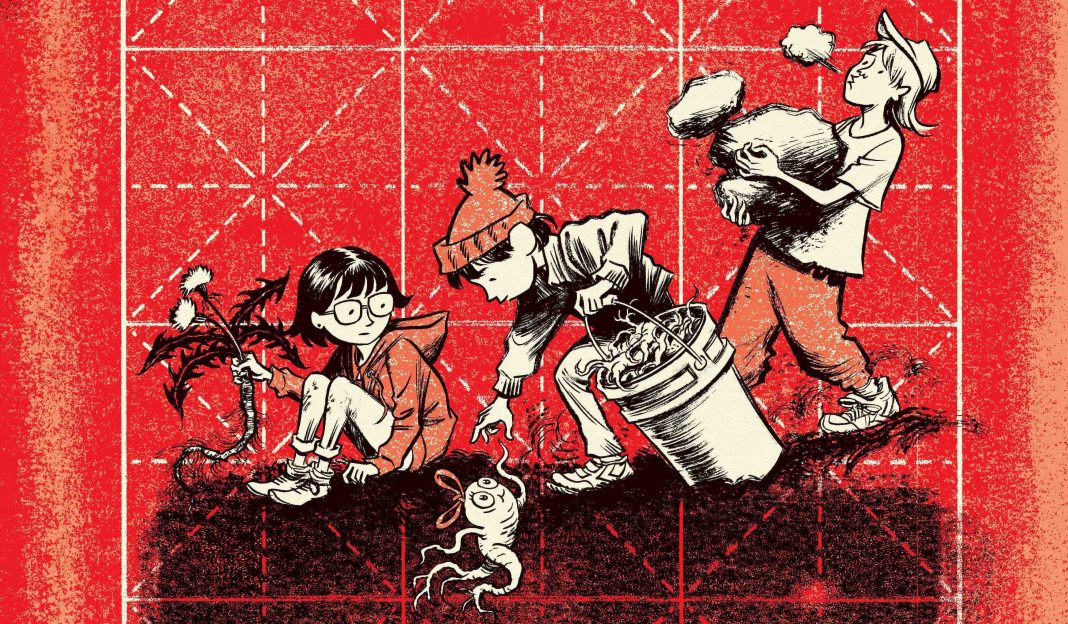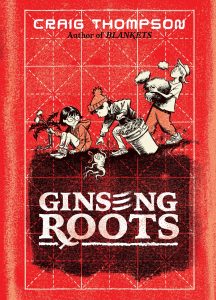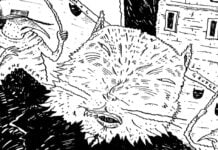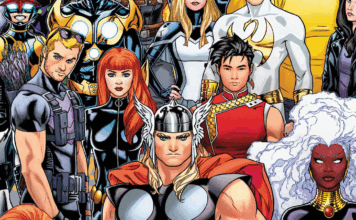Ginseng Roots
Creator: Craig Thompson
Publisher: Pantheon
Publication Date: April 2025
It was a privilege to read Ginseng Roots, out now from Pantheon, a contemplation of Craig Thompson’s childhood working in ginseng farming and its effects on his present life, an extensive exploration of ginseng’s interactions with society across time and space, and an excuse to shine a light on the lived experience of many in his community, both local and international. It’s also an unofficial addendum to his most famous book, Blankets, a memoir about his past that focuses on his religious upbringing and teenage years.
Thompson is one of the greats of comics, no question, and his return to graphic nonfiction does not disappoint. It’s a full meal. He brings his signature style of vulnerability, keen observation, and subtle humor. Feeling the heft of the substantial volume in my hands and seeing his beautiful, detailed brushwork on every page felt like discovering the magic of graphic novels for the first time.
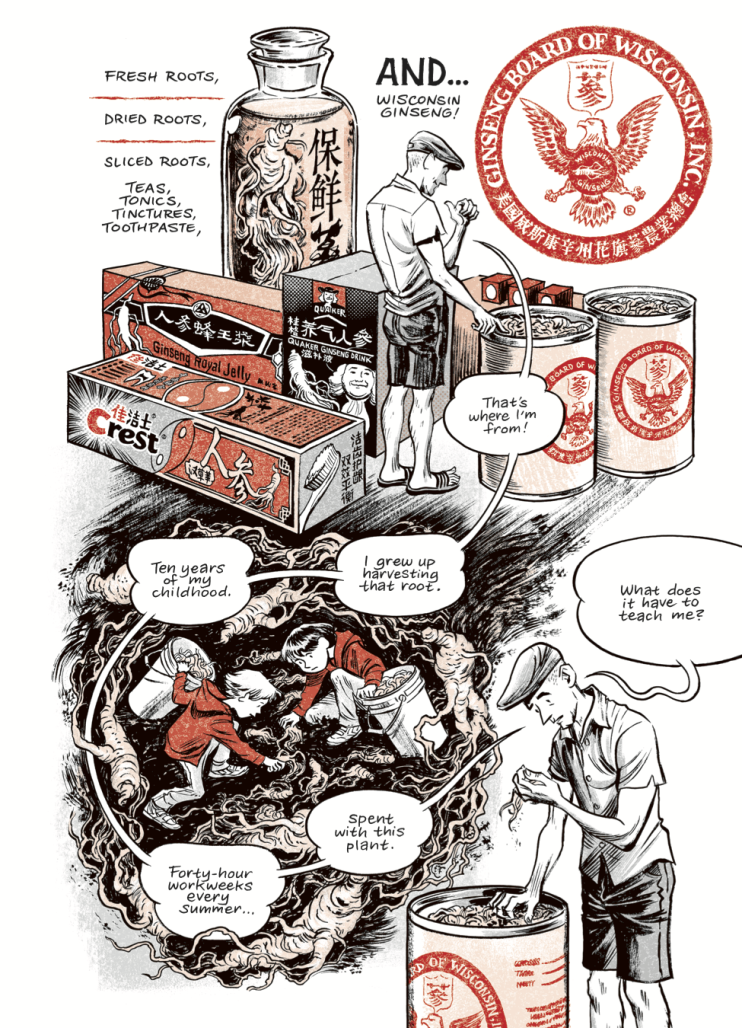
Ginseng Roots interweaves memoir, travelogue, journalism, and societal history, mostly through the filter of ginseng growing. Thompson, who grew up working within the little-known Wisconsin ginseng farming community, reflects on that experience in the book. He also conducted interviews and extensive research, incorporating the voices of many others. Ginseng Roots often moves beyond his personal past or present observations to explore agriculture, small farmers, rural society, the influences of religion, global flows of commerce, the personal histories of refugees tied to the ginseng industry, the impact of war, migrant farm workers, and the influences of eastern philosophy, medicine, and mythology.
The book’s flow is mostly chronological and associative based on Thompson’s journey of research and curiosity about ginseng, his roots, and the roots of his community (with a few flashbacks), and the breadth is extremely wide. I read it in installments, meditatively, needing to stop and process the depth of what I’d read.
Ginseng Roots is very relevant to our current times and may drive greater empathy for those who come to the book with an open mind. Thompson includes observations on the value of immigration (generally in the form of commentary from growers), horrific experiences of refugees, health issues or implied ones from heavy pesticide use, the fickle nature of markets on farmer livelihoods, and more. Even just one or two of these themes could fuel a book club discussion for days!
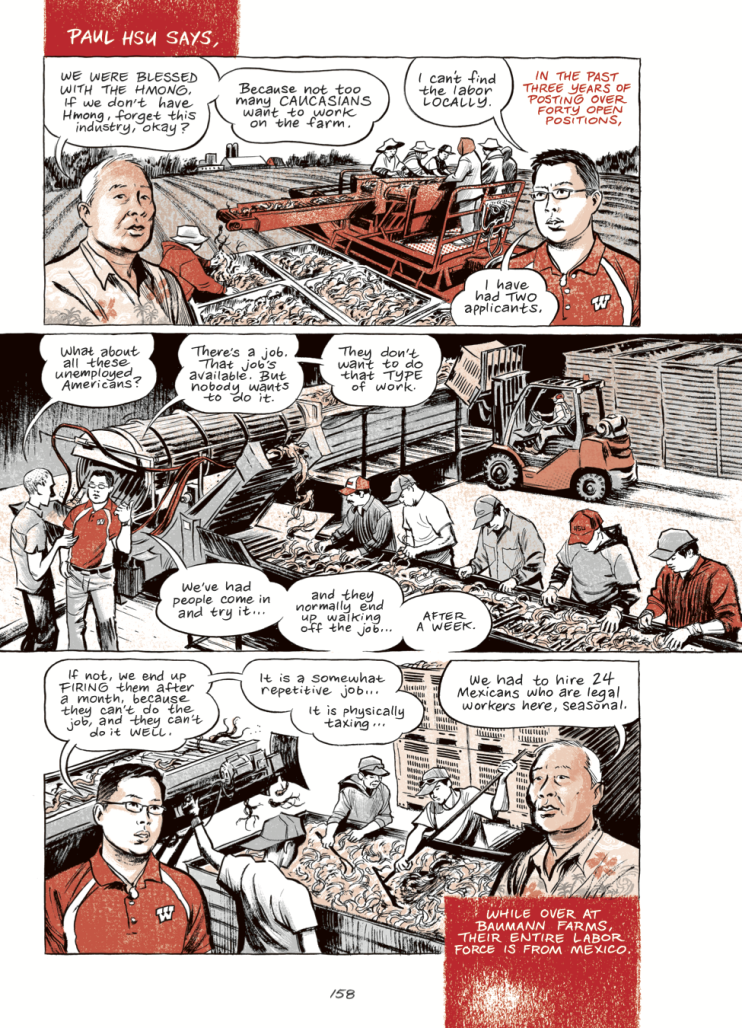
A naturalist can also find much to enjoy in Thompson’s sensory notes of smelling, touching, tasting, and grading ginseng, how people use it for health, and detailed botanical drawings. He captures lessons on growing the root, cultivating/protecting it, and its unique properties, from the mouths of growers and specialists themselves.
Thompson’s visual craft is seasoned and gorgeous, featuring evocative, expressive layouts and single color usage – only red highlights the black, white, and gray. For the art lover, the book’s stylistic variety is also delightful, from detailed diagrams and cultural mosaics to whimsically cartoonish ginseng characters, realistic people and historical images to mythological scenes. He knows when to speak with visuals and play with text (including callbacks to earlier scenes) and the result is seamless and satisfying.
The personal elements of the book are no less interesting than the societal ones. Ginseng Roots expands on some of the threads from Blankets, noting how Thompson’s family has evolved, and revealing a sister he hadn’t previously discussed. It explores his present relationships, especially with his brother Phil, and provides some reflections on their responses to the past, their upbringing, and the realities of aging. There are even a few surprise pages contributed by Phil himself.
There is an undercurrent of tragedy in Thompson’s depicted health struggles with his hands, making the reader wonder what will happen next and what the causes were. Was chemical exposure partially to blame? At the same time, it makes this gift of a book he has given us seem all the more precious and even more of a feat of creation. I hope fervently that he will keep creating in whatever way makes sense for him, because the world will be richer for it.
The book is also a nod to the notorious difficulties of working in the comics industry, the anxiety, the underpaid nature of it, the instability, and the second-guessing of one’s next project. It’s a shame this is the case, even amongst those who have produced some of the most well-known and acclaimed modern graphic novels. Thompson brings a meta-gaze to the bookmaking process itself, the open-ended research, conversations and explorations of other mediums, the results of pitches, the moments of doubt.
In the narrative, Thompson explores fascinating patterns and symbols connecting his life to ginseng, to mythology, and to others he meets. The wide-ranging subject matter of this book might have blocked some creators altogether, but he capably weaves together disparate threads with an organic, intuitive unity, content to leave some details as curiosities. It’s a reminder that, in reality, even as some questions are answered, new ones appear – all we can do is stop in interesting places.
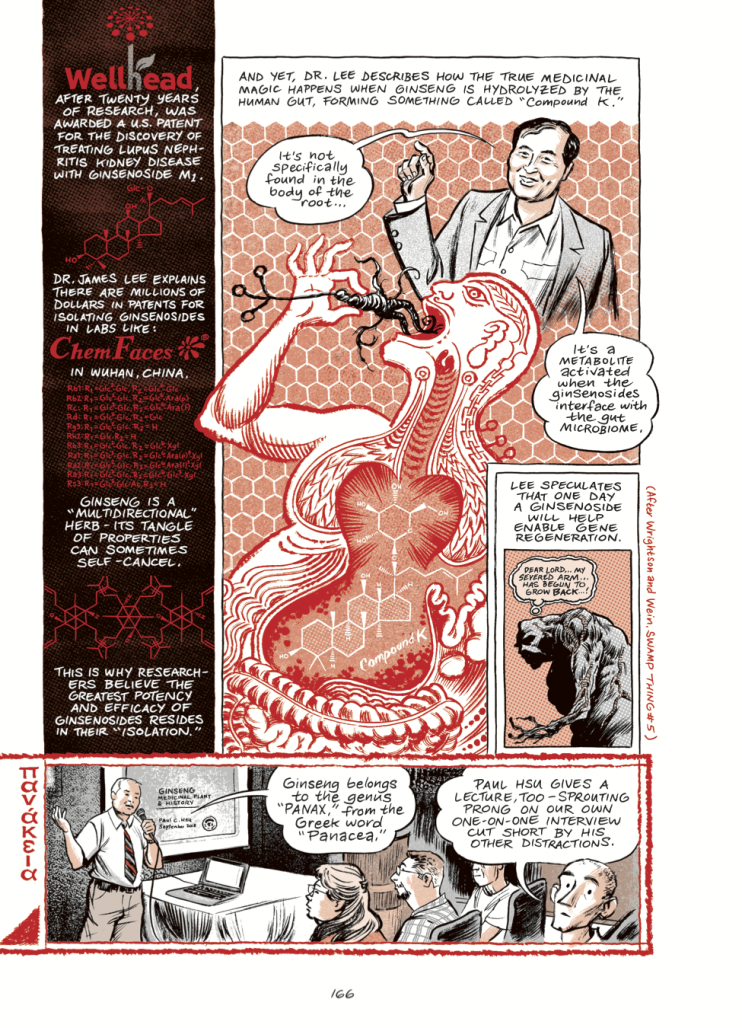
Ginseng Roots is a thoughtful generalist’s paradise. Thompson walks down alleys to see what’s in them, chases branching paths across the world, and links the individual journey of ginseng to the societal. In personal terms, it’s Thompson’s search for meaning and refuge amidst a challenging past and difficult present that is shared with many others. More broadly, the experience feels like a meditation on every human’s impact, how our specific piece of local participation has global ripples that we too could observe, if only we stopped to look.
Buy this book, be moved, and support one of the finest creators in comics today.
Ginseng Roots is available now.
Read more great reviews from The Beat!
